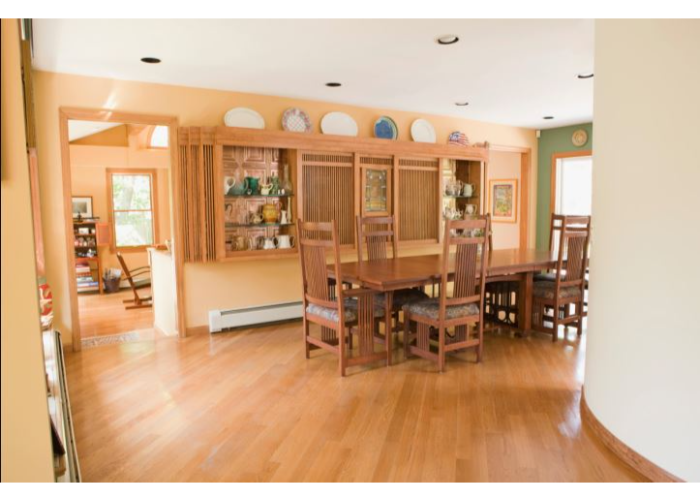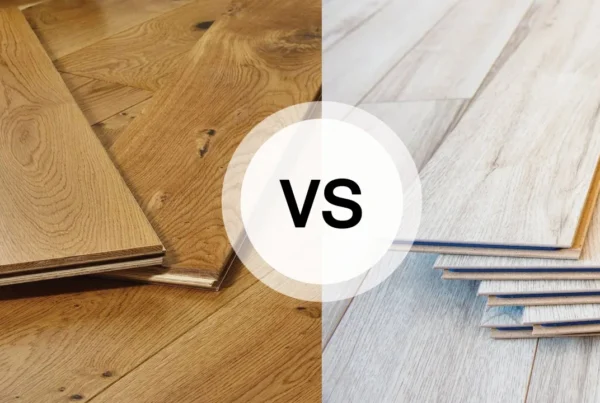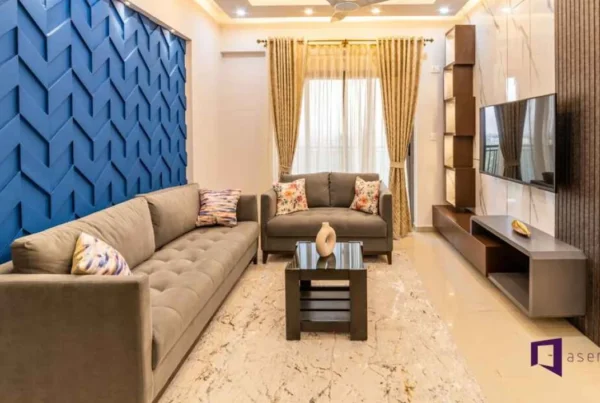Table of Contents
- Introduction to Solid and Engineered Wood Flooring
- What Is Solid Wood Flooring?
- Key Features of Solid Wood
- Benefits of Solid Wood Flooring
- What Is Engineered Wood Flooring?
- Key Features of Engineered Wood
- Benefits of Engineered Wood Flooring
- Solid Wood vs. Engineered Wood: Key Differences
- Construction and Durability
- Appearance and Aesthetic Appeal
- Maintenance and Longevity
- Cost Considerations
- Which Is Better for Your Home?
- How Goel World Offers Premium Wood Flooring Solutions
- Conclusion
- FAQs about Solid and Engineered Wood Flooring
1. Introduction to Solid and Engineered Wood Flooring
Wood flooring is a timeless and elegant choice for any home, offering warmth, natural beauty, and long-lasting durability. However, when deciding between solid wood and engineered wood flooring, homeowners must consider factors like durability, cost, and maintenance. Both options have unique advantages, but which is better suited for your needs? In this article, we’ll compare solid wood and engineered wood flooring, highlighting their key differences to help you make the best choice for your home. Goel World offers high-quality wood flooring solutions that meet the demands of modern Indian homes.
2. What Is Solid Wood Flooring?
Key Features of Solid Wood
Solid wood flooring is made from a single piece of natural wood, typically around ¾ inch thick. Each plank is milled from a solid piece of timber and can be sanded and refinished multiple times. Common types of solid wood used for flooring include hardwoods like oak, teak, and maple, all known for their strength and natural beauty.
Benefits of Solid Wood Flooring
- Durability: Solid wood floors are incredibly durable and can last for generations with proper care. They can be sanded and refinished multiple times, restoring their appearance over the years.
- Natural Beauty: Each plank of solid wood is unique, offering rich colors, natural grains, and a warm, timeless aesthetic that enhances any space.
- Value Addition: Solid wood flooring is considered a premium material, adding significant value to your home.
3. What Is Engineered Wood Flooring?
Key Features of Engineered Wood
Engineered wood flooring consists of a top layer of real hardwood veneer bonded to multiple layers of plywood or high-density fiberboard (HDF). This layered construction provides greater stability and resistance to changes in temperature and humidity compared to solid wood. Engineered wood planks come in a variety of thicknesses and can also be sanded and refinished, though not as many times as solid wood.
Benefits of Engineered Wood Flooring
- Stability: Engineered wood’s layered construction makes it less susceptible to warping or expanding due to changes in humidity and temperature, making it ideal for use in areas with fluctuating climates, like basements or coastal regions.
- Versatility: Engineered wood can be installed in a variety of ways, including floating, stapling, or glueing down, offering more flexibility in installation.
- Cost-Effective: Engineered wood offers the look of real wood at a more affordable price, making it a practical choice for homeowners on a budget.
4. Solid Wood vs. Engineered Wood: Key Differences
Construction and Durability
- Solid Wood: Constructed from a single piece of natural wood, solid wood is extremely durable and can be refinished multiple times. However, it can be prone to warping in areas with high humidity or temperature fluctuations.
- Engineered Wood: Engineered wood’s multi-layer construction provides enhanced stability, making it less likely to warp or swell. However, it cannot be refinished as many times as solid wood due to the thinner hardwood veneer.
Appearance and Aesthetic Appeal
- Solid Wood: Offers a classic, natural look with unique grains and patterns in each plank. It ages beautifully and develops a patina over time, adding character to the home.
- Engineered Wood: Engineered wood replicates the look of solid wood, but its aesthetic can vary depending on the quality of the veneer. High-quality engineered wood can be nearly indistinguishable from solid wood.
Maintenance and Longevity
- Solid Wood: Requires regular maintenance, including periodic sanding and refinishing to maintain its appearance. With proper care, solid wood can last for decades or even centuries.
- Engineered Wood: Easier to maintain than solid wood due to its stability and resistance to warping. However, engineered wood may need to be replaced sooner than solid wood, especially if the veneer is thin and cannot be refinished multiple times.
Cost Considerations
- Solid Wood: More expensive due to the use of natural, high-quality timber and the ability to refinish multiple times over its lifespan.
- Engineered Wood: Generally more affordable than solid wood while still offering the look of natural hardwood. It’s a cost-effective alternative for those who want the aesthetics of wood without the higher price tag.
5. Which Is Better for Your Home?
The decision between solid wood and engineered wood depends on several factors, including your budget, where you plan to install the flooring, and how much maintenance you’re willing to perform.
- Choose Solid Wood if you want a long-lasting, premium flooring option that can be refinished multiple times and adds significant value to your home.
- Choose Engineered Wood if you’re looking for a more affordable option that offers the look of real wood with better resistance to moisture and temperature fluctuations.
For homeowners in areas with high humidity or fluctuating climates, engineered wood is often the better choice due to its stability. However, if you’re aiming for a luxurious, long-term investment and prefer the rich, natural aesthetic of hardwood, solid wood is an excellent option.
6. How Goel World Offers Premium Wood Flooring Solutions
At Goel World, we provide a wide range of both solid wood and engineered wood flooring options to meet the needs of modern Indian homes. Our high-quality wood flooring is sourced from trusted manufacturers, ensuring durability, beauty, and longevity. Whether you’re looking for the timeless appeal of solid wood or the practical benefits of engineered wood, our expert team can help you select the perfect flooring for your space. With over 25 years of experience in the industry, Goel World is your go-to supplier for premium wood flooring in Lucknow.
7. Conclusion
Both solid wood and engineered wood flooring have their advantages, and the right choice depends on your specific needs and preferences. Solid wood offers unmatched longevity and a rich, natural look, while engineered wood provides greater stability and affordability. By understanding the key differences between the two, you can make an informed decision that aligns with your home’s style and functional requirements. At Goel World, we offer expert guidance and a wide selection of premium wood flooring options to help you create beautiful, durable spaces in your home.
8. FAQs about Solid and Engineered Wood Flooring
Q1: Can solid wood flooring be installed in humid areas?
Solid wood is prone to warping in humid environments. Engineered wood is a better choice for areas with high moisture or temperature fluctuations.
Q2: How often can solid wood be refinished?
Solid wood can be sanded and refinished multiple times—typically 3-5 times over its lifetime—depending on the thickness of the planks.
Q3: Is engineered wood flooring suitable for kitchens and basements?
Yes, engineered wood is more resistant to moisture and temperature changes, making it a suitable option for kitchens and basements.
Q4: What is the lifespan of engineered wood flooring?
High-quality engineered wood flooring can last 20-30 years with proper care, although it may not last as long as solid wood.
Q5: Where can I find premium solid and engineered wood flooring in Lucknow?
Goel World offers a wide selection of high-quality solid and engineered wood flooring options, providing expert guidance to help you choose the best solution for your home.






